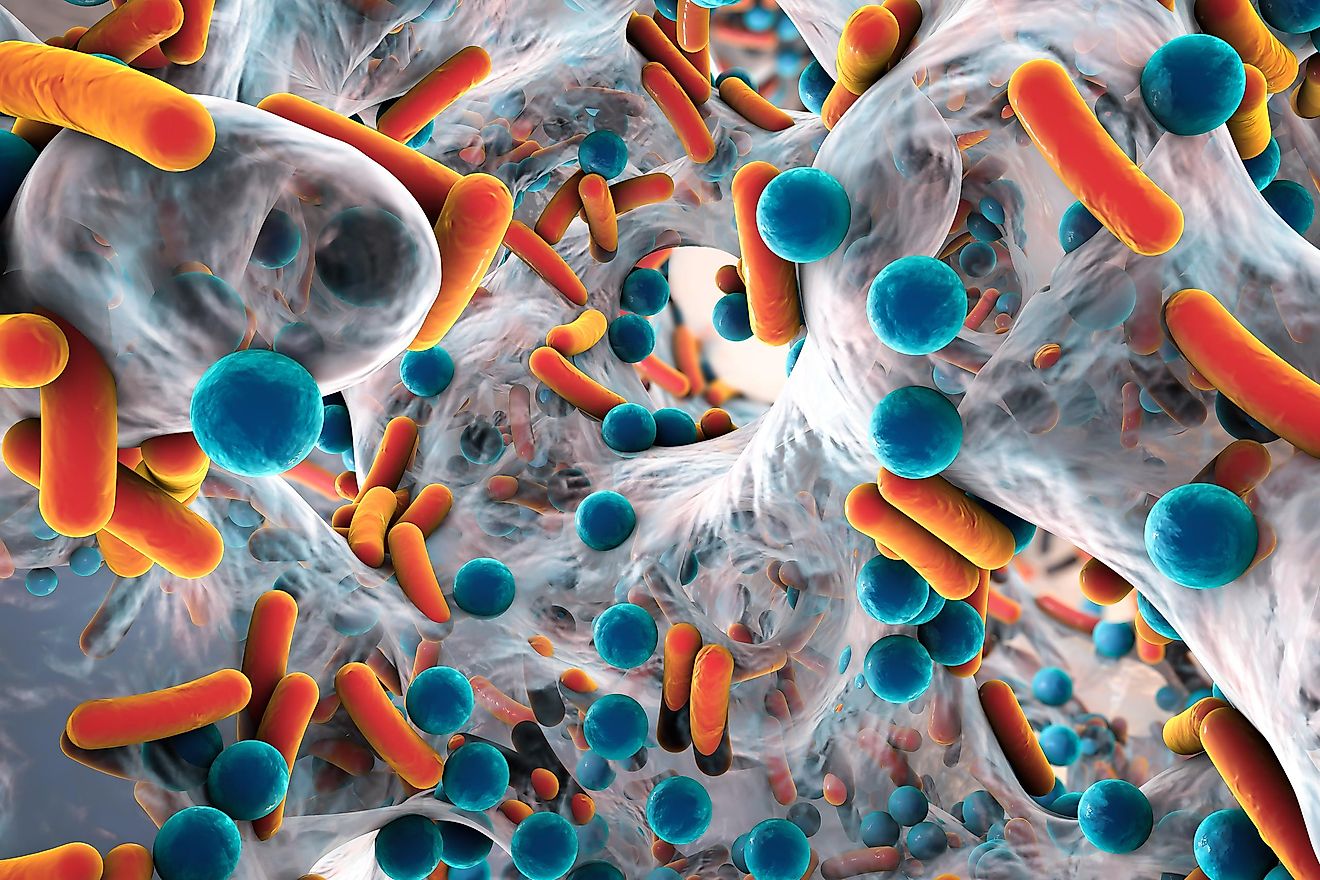What Is The Difference Between Viral And Bacterial Infections?

- There are more bacterial cells in your body than there are human cells.
- Viruses are about a thousand times smaller than bacteria and bacteria are much smaller than most human cells.
- Virus comes from the Latin word for “poison” or “slimy liquid.
It is time to test your knowledge of pathogenic microorganisms. Do you know the differences between bacterial and viral infections? Since bacterial and viral infections are treated in different ways, understanding their distinctions is crucial. In case you skipped reading the infectious diseases chapter of your high school biology textbook, here is an overview of what you should know about bacteria and viruses.
The Differences Between Bacteria and Viruses
Microscopic pathogens prove that the saying "out of sight, out of mind" isn't always the case. While viruses and bacteria are both too small to be seen by the naked eye, they have the potential to cause a host of complications to human health. With the exceptions of their infectious symptoms and modes of transmission among populations, viruses and bacteria are quite different from each other.
Bacteria are small, yet complex, single-celled organisms that can self-reproduce inside and outside of the human body. The majority are comprised of a rigid wall and a thin, rubbery membrane that lines the cell. Bacteria are resilient; records of fossils suggest that bacteria have been in existence for nearly 3.5-billion years and can survive in extreme environments, including in heat, cold, and even radioactive waste.
Most types of bacteria don't cause harm to humans; in fact, less than 1% of bacteria cause disease people. Many strains actually play important roles in critical physiological functions, like the digestion of food, the destruction of disease-causing microbes, the eradication of cancer cells, and the provision of essential nutrients.
If you think bacteria are small, just wait until you measure the size of viruses. Tiny, but mighty, research shows that the largest identified virus is smaller than the smallest bacteria. Viruses, unlike bacteria, are not cells. All viruses consist of is a protein coat and a core that stores genetic material (either RNA or DNA). Without a host, such as a human or animal, viruses can't survive or multiply. They are only able to cause infections and reproduce by attaching themselves to and entering a host's healthy cells. Viruses can reprogram cells to reproduce new viruses until the cells burst and die, while others can transform normal cells into malignant cells.
Most viruses do result in disease to humans and are particular about which types of cells they attack. In certain cases, viruses can even target bacteria.
The Differences Between Bacterial and Viral Infections
You guessed it! Bacterial infections are caused by bacteria, and viral infections are caused by viruses.
It can sometimes be quite challenging to identify if the source of certain illnesses, like pneumonia, meningitis, and diarrhea, is bacterial or viral because many symptoms, conditions, and diseases can be caused by both. Understanding a patient's medical history and performing a physical exam can assist doctors in determining the diagnosis of a bacterial or viral infection. A blood or urine test, a tissue culture test, or tissue biopsy may also be required for analysis. For a list of bacterial infections, including whooping cough, ear infections, urinary tract infections, and food poisoning, click here.
For a list of viral infections, including the common cold, flu, chickenpox, and HIV/AIDS, click here.
Treatments for Bacterial and Viral Infections
Considered one of the most significant medical discoveries in history, antibiotics treat bacterial infections by either killing bacteria or preventing them from multiplying. Because bacteria are able to easily adapt to antibiotics, many bacterial strains have developed resistance as a result of the inappropriate or excessive use of these treatments. As antibiotic resistance becomes increasingly concerning, the majority of prominent health organizations recommend limiting the prescription of antibiotics to serious cases in which clear evidence of bacterial infection exists.
Viral infections are managed differently. Treatments typically target symptoms (like lozenges for coughs and sore throats, and warm fluids for hydration). The development of vaccines in the early 1900s revolutionized preventative medicine, significantly reducing the incidences of viral diseases like polio and measles. Vaccines are also critical in the prevention of infections including influenza, hepatitis A, hepatitis B, human papillomavirus (HPV), among countless others.
Antiviral medications are now available to treat certain viral diseases, such as herpes simplex virus infections, HIV/AIDS, and influenza, by disrupting viral reproduction. However, studies demonstrate that the administration of antiviral medications is linked to the development of drug-resistant microbes. Remember: Antibiotics are not an effective treatment option for viral infections.











